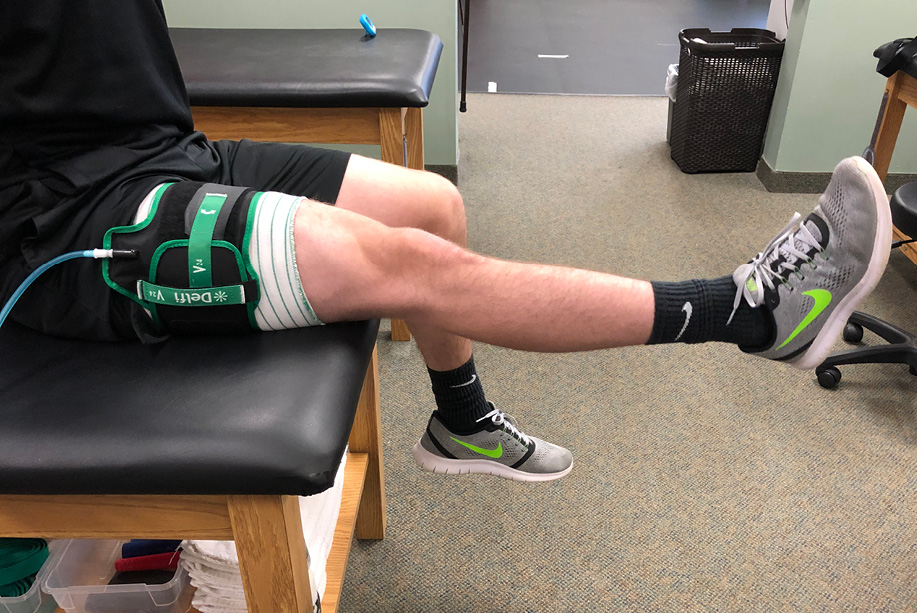
Blood flow restriction (or “BFR”) is a physical therapy modality that restricts blood flow to a muscle. BFR requires the application of a device similar to a blood pressure cuff or tourniquet to safely compress the blood vessels underneath. The goal is to use apply enough pressure to completely restrict the venous blood flow (blood LEAVING the muscle), while allowing arterial blood flow (blood going into the muscle). When done correctly, blood ends up pooling in the muscle beyond the tourniquet, creating a hypoxic environment in which the tissue is deprived of oxygen. This lack of oxygen is said to increase growth hormones, muscle hypertrophy, and muscle strength.
Hypoxic training is not a new trend. If you’ve ever heard of someone training at altitude for a competition or race, the principle behind BFR is similar—the body is forced to compensate due to the lack of oxygen. In fact, “weight-lifters have been tapping into the benefits of BFR for years,” says Eric Bowman, M.D., M.P.H., assistant professor of orthopedic surgery and rehabilitation at Vanderbilt University Medical Center in Franklin, TN.
While research demonstrates that BFR can decrease muscle atrophy on its own, physical therapists typically incorporate exercise with the use of the BFR cuff. The biggest benefit of BFR is that muscular gains can be attained without the stress of high loads weight or resistance. Simple, low-load exercises can produce a similar muscle burn to traditional heavier weight training.
With traditional exercise, we need to lift 70-85% of our one repetition maximum to achieve increased strength or muscle growth. With BFR, we can produce similar results at only 20-35% of our one rep max. Talk about a significant difference!
This is particularly useful for patients who have weight-lifting restrictions or are experiencing pain as they progress through a strengthening program. In general, BFR training helps to reduce the amount of stress placed on the applied limb.
Prior to including BFR in your plan of care, an experienced physical therapist will carefully consider the indications and contraindications, and work closely with your prescribing physician.
To learn more about blood flow restriction therapy, visit our BFR page or request an appointment online with one of our certified clinicians.
References
- Slysz, Joshua et al. “The efficacy of blood flow restricted exercise: A systematic review & meta-analysis.” Journal of Science and Medicine in Sport, Volume 19, Issue 8, 669 – 675, September 2015.
- Patterson, Stephen D et al. “Blood Flow Restriction Exercise: Considerations of Methodology, Application and Safety.” Frontiers if Physiology, Volume 10, 533, May 2019.
- “Personalized Blood Flow Restriction.” Owens Recovery Science – Blood Flow Restriction Training, www.owensrecoveryscience.com/.

Allison Tabrys, PT, DPT, CSCS
Clinic Director, Excel Physical Therapy – Montvale
15 S. Kinderkamack Road, Montvale, NJ 07545
The medical information contained herein is provided as an information resource only, and does not substitute professional medical advice or consultation with healthcare professionals. This information is not intended to be patient education, does not create any patient-provider relationship, and should not be used as a substitute for professional diagnosis, treatment or medical advice. Please consult with your healthcare provider before making any healthcare decisions or for guidance about a specific medical condition. If you think you have a medical emergency, call your doctor or 911 immediately. IvyRehab Network, Inc. disclaims any and all responsibility, and shall have no liability, for any damages, loss, injury or liability whatsoever suffered as a result of your reliance on the information contained herein.
